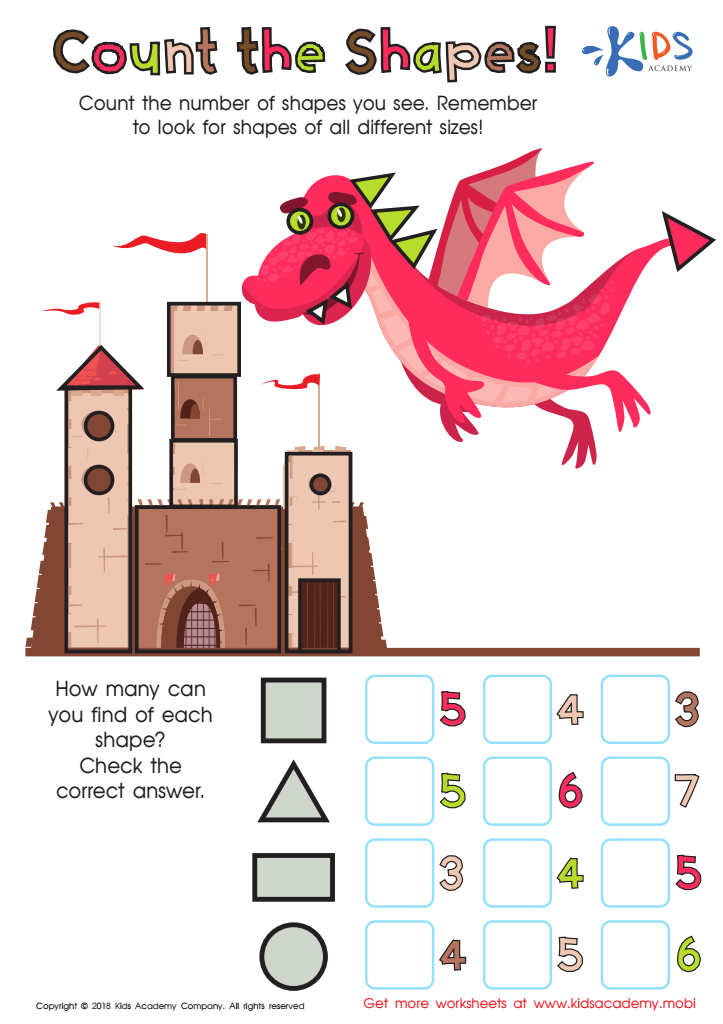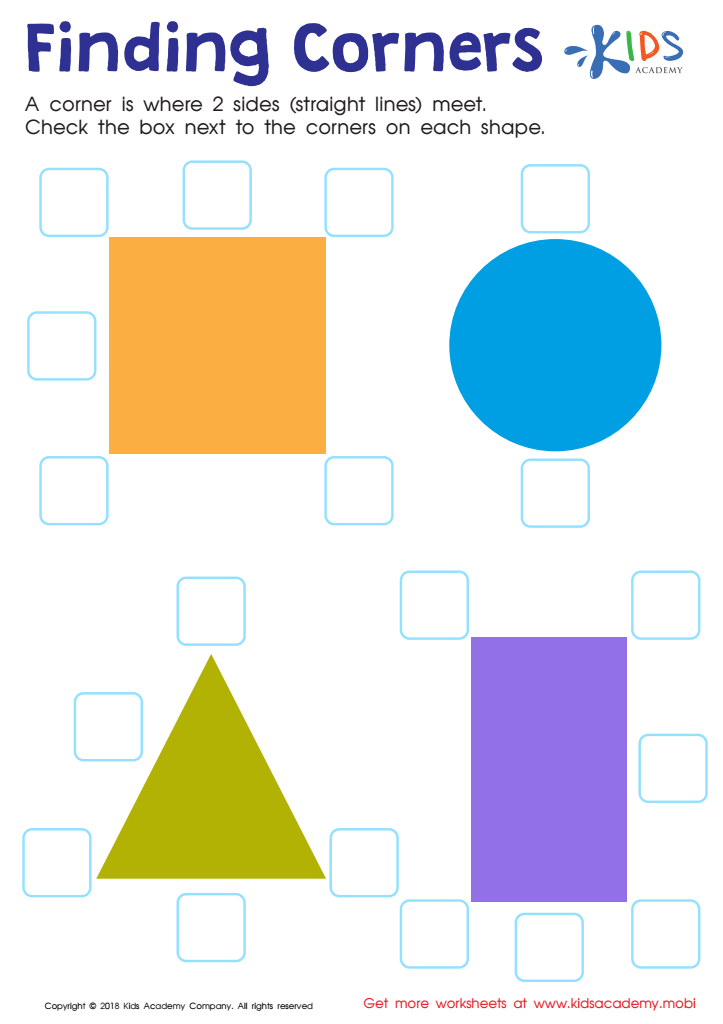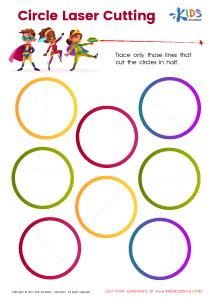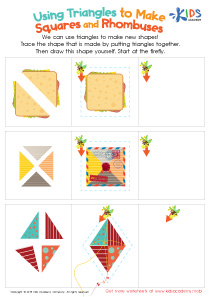Counting skills Normal 2D Shapes Worksheets for 4-Year-Olds
4 filtered results
-
From - To
Enhance your 4-year-old's counting and shape recognition skills with our engaging Counting Skills Normal 2D Shapes Worksheets. These printable worksheets are expertly designed to captivate young learners as they identify and count familiar 2D shapes like circles, squares, and triangles. Each activity thoughtfully combines counting practice with fun illustrations to stimulate preschoolers' interest and reinforce essential math foundations. Ideal for both homeschool and classroom settings, our worksheets offer a delightful and educational way to build early math confidence. Visit Kids Academy to discover an array of resources that make learning enjoyable for young minds!


Count the Shapes Worksheet


Using Squares to Make Rectangles Worksheet


Finding Corners Worksheet


Gingerbread Man Geometry Maze Worksheet
Counting skills and familiarity with 2D shapes are crucial aspects of early childhood education that serve as foundational blocks for future learning. For four-year-olds, mastering these concepts provides numerous cognitive and developmental benefits.
First, learning to count helps children develop number sense, which includes understanding the value of numbers and the relationships between them. This skill is integral for more complex mathematical operations they will encounter in later years. Furthermore, counting helps enhance memory, attention, and problem-solving abilities, which are vital for academic and daily life.
Similarly, recognizing basic 2D shapes (like circles, squares, and triangles) aids in developing spatial awareness and geometric reasoning. These skills are essential not only for mathematics but also for understanding and navigating the physical world. Shape recognition helps in categorizing and comparing different objects, facilitating language development as children learn shape names and descriptive words.
Beyond cognitive development, both counting and shape recognition foster fine motor skills when children trace numbers or draw shapes. They also provide opportunities for parent-child interaction through playful learning activities, strengthening emotional bonds.
In summary, prioritizing counting skills and basic shape recognition in early childhood equips children with essential tools for academic success, cognitive development, and practical life skills, making it a critical focus for both parents and teachers.
 Assign to My Students
Assign to My Students





















